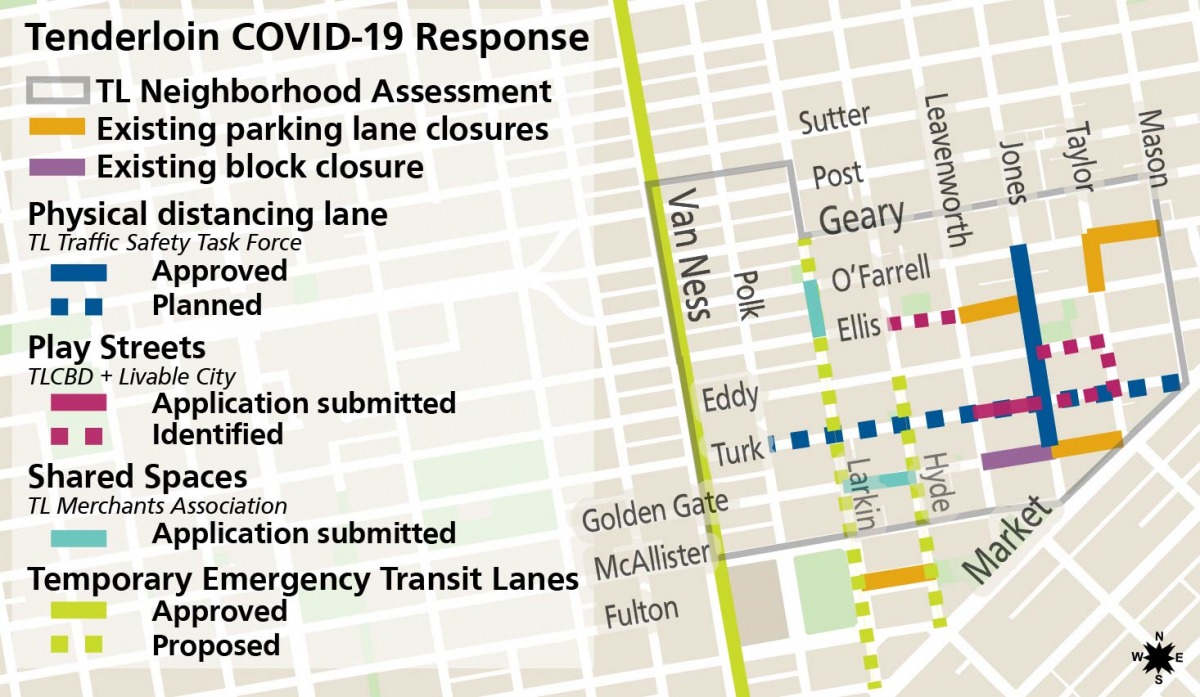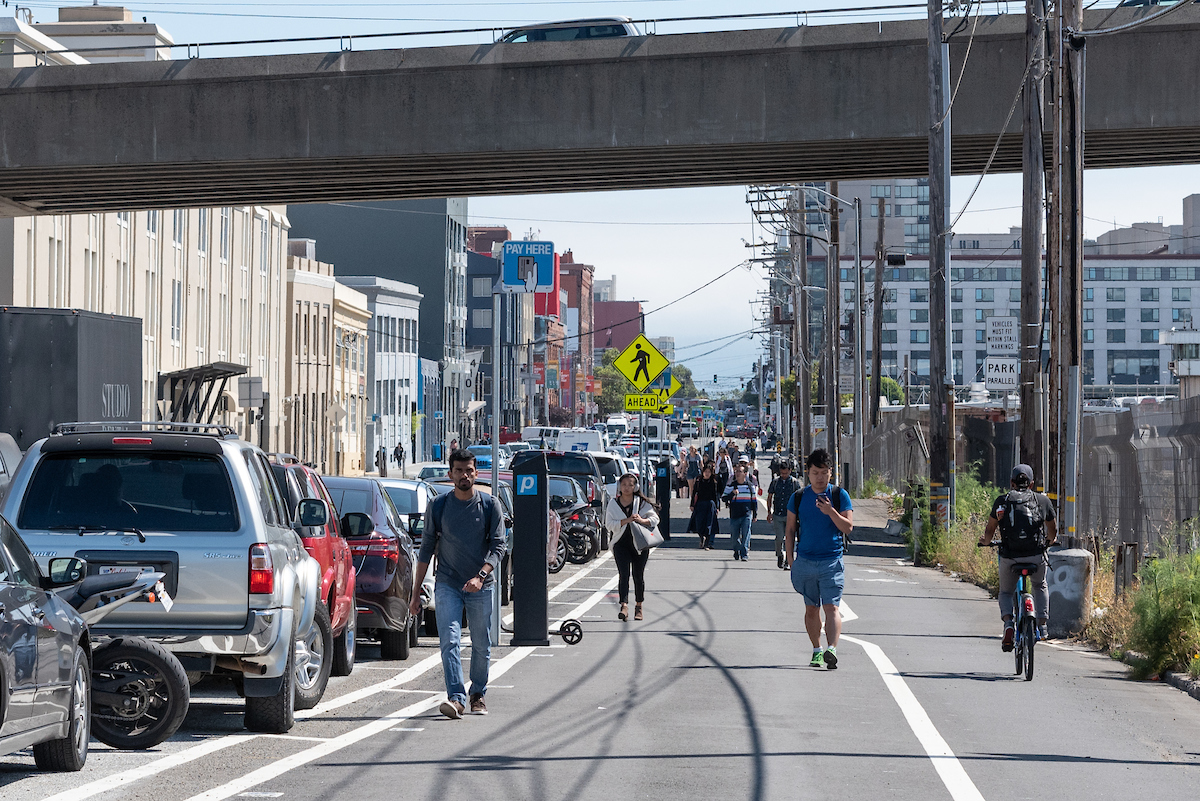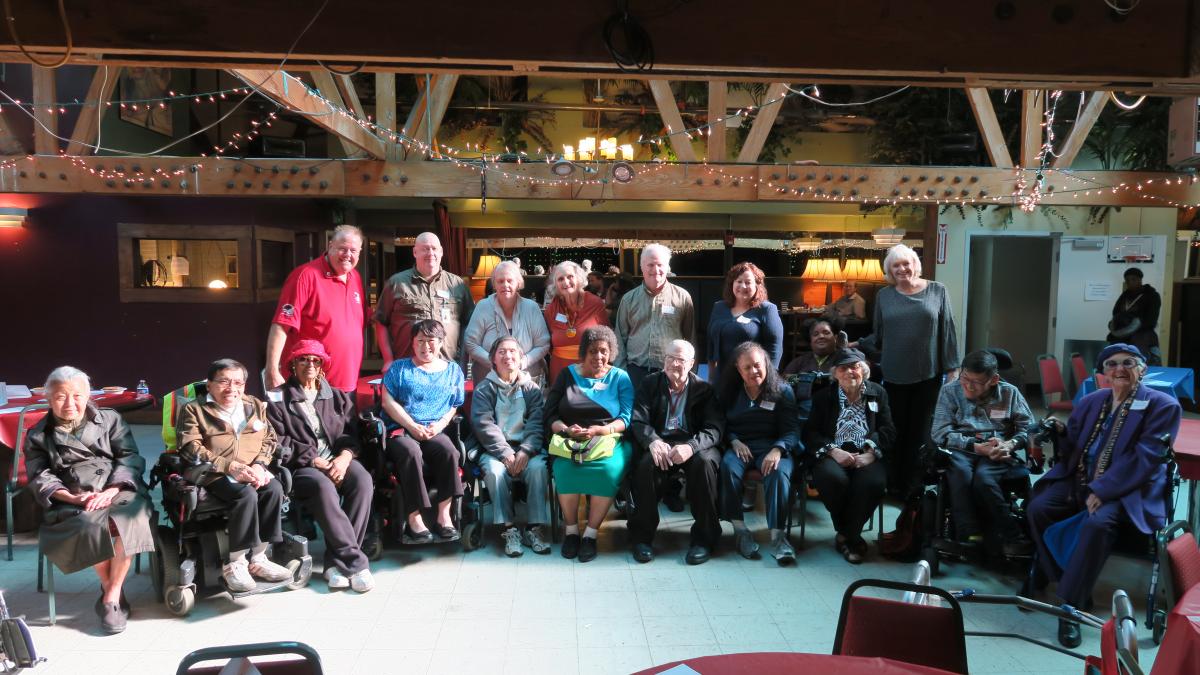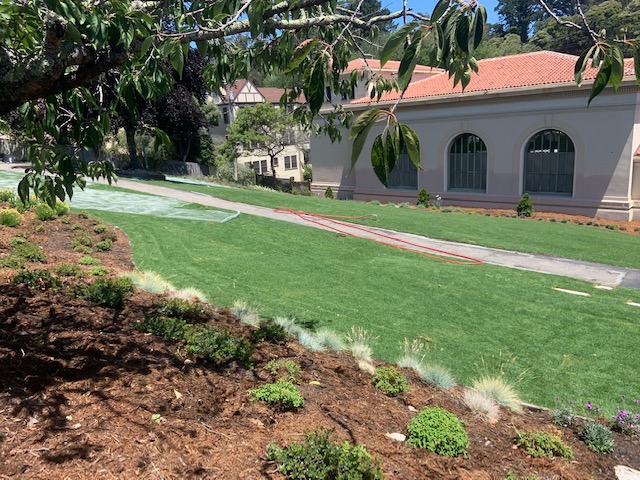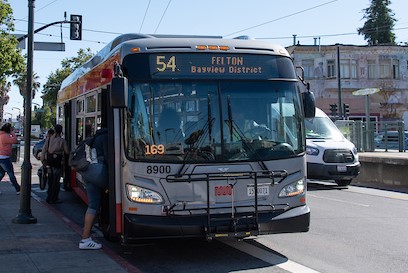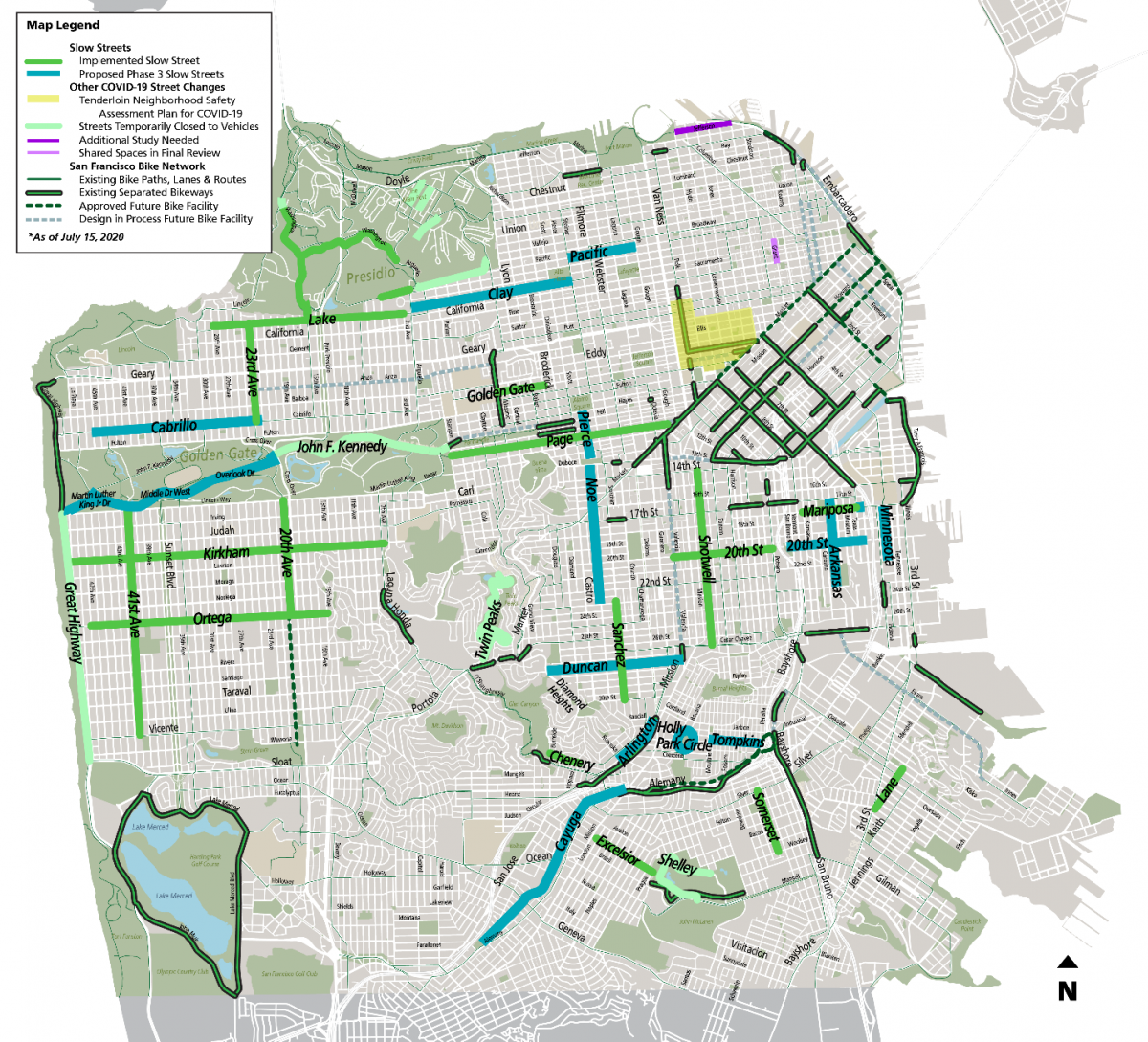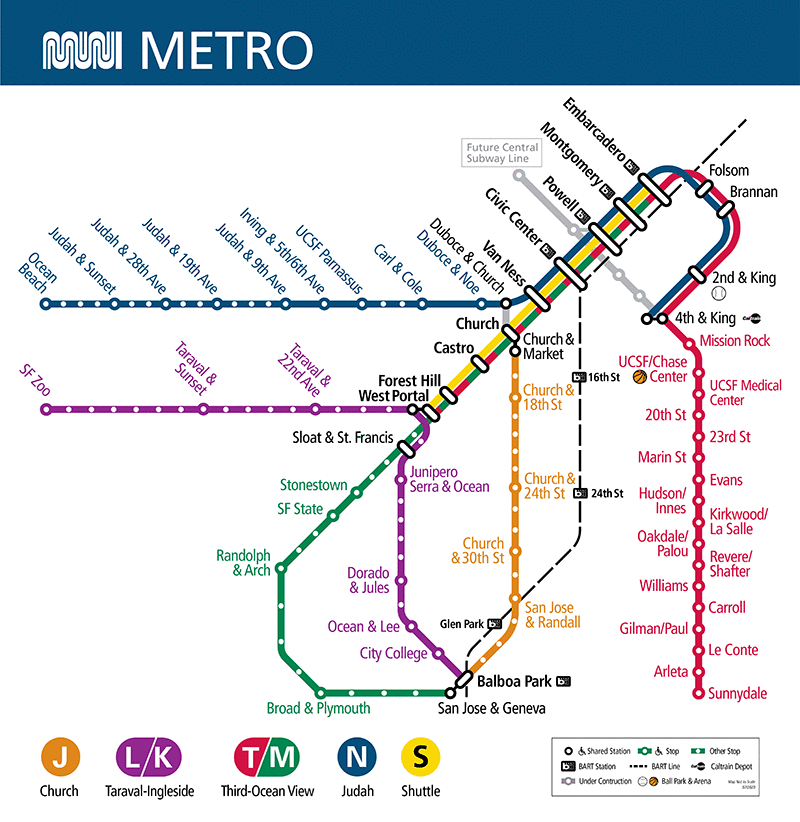The Future of Transit Service Through the Health and Budget Crisis
By Jeffrey Tumlin
The pandemic has upended every aspect of our society, and the SFMTA is no exception. The COVID-related health and financial crises have resulted in deep and painful cuts to Muni service. We will be draining our fund reserve and spending one-time money just to sustain the service we have. Absent new outside funding, we fall off a financial cliff in 2023, just as the city needs us the most to support its economic recovery. As your Director of Transportation, I want to be open and transparent about how we got here and what it means for you.
When I took this job six months ago, our mobility systems were strong but inefficient, the result of too many years of avoiding hard or politically unpopular choices. This crisis has now forced us to make those hard choices. It has also demonstrated the SFMTA workforce’s depth of talent and creativity, and its capacity for collaboration and strategic risk-taking. The effects of this crisis will continue for years, and so I’m pushing all of us to learn from our successes and failures. Our approach is simple: be thoughtful and strategic and try new things without fear; listen carefully to feedback; quickly adjust what we are doing if it is not working; and, build upon the experiments that succeed.
Pandemic’s Impact
At the pandemic’s onset, health concerns among our drivers and front-line workers coupled with a massive drop in ridership and fare revenue necessitated that we cut back Muni service dramatically. To help fill in the transit service gaps, our agency has rapidly rolled out new programs and promoted existing programs to respond to the need of San Franciscans for additional mobility options:
- Slow Streets, expanding spaces for walking, cycling and playing;
- The new Essential Trip Card that helps many people with disabilities and older adults access discounted taxi rides;
- The Department of the Environment’s Essential Worker Ride Home program, and
- The Shop-a-Round subsidized taxi ride to help seniors and people with disabilities get to and from the grocery store.
Because of the financial impact of COVID-19 on so many San Franciscans, the SFMTA, the mayor and the Board of Supervisors came together and agreed not raise transit fares for the coming two years. However, this decision contributes to our dire financial outlook and requires tough tradeoffs about which services the agency can continue to provide or how quickly we can provide them.
The combined pandemic and financial crisis mean the SFMTA must do more with less. We are doing everything we can to save money while maintaining as much of our service as possible. This means:
- Eliminating most unscheduled overtime work;
- Reducing the purchasing of goods and services to just the immediately needed essentials;
- Significantly slowing down hiring; and,
- Creating emergency temporary transit lanes to maximize the amount of service our buses can provide in the face of rising car congestion (read more about the data here).
Restoring Transit Service
As the economy slowly reopens, we are bringing some of the transit service back. In May and June we increased service, and by mid-August we expect to have additional service hours restored. However, the SFMTA won’t be able to restore more than 70 percent of pre-COVID service hours for at least the next six months, and probably even longer.
With physical distancing requirements, we need three times the number of vehicles to move the same number of passengers. This means that even with 70% of service hours, our riders may feel like there is only 20 or 25 percent of our pre-COVID service available, because buses quickly reach their capacity limit. This results in essential workers being passed up at stops, even though we are offering better frequency and reliability on our highest ridership line than we had pre-COVID. When Metro Muni service returns in August, we will be deploying close to the maximum number of available operators and vehicles to serve our riders. Unless we are able to use those vehicles to carry more people, we will not be able to increase service any further.
Even if physical distancing constraints were relaxed, SFMTA would not be able to return to full transit service in the near future. This is because pre-COVID, the agency was already short on the number of operators needed to provide the scheduled service levels and our budget crisis prevents us from filling those positions or from backfilling positions that become vacant. Moreover, the health crisis means more of our employees are on long-term leave.
In deciding how the 70 percent of service is restored, we are focused on:
- Meeting ridership demands identified during the pandemic; and
- Prioritizing service for people who need it most—our obligation is to serve people that depend on transit for their daily survival.
We are working hard to make sure that we are serving all communities, particularly low-income and minority populations, and neighborhoods with the least access to services. With limited resources, providing better service to those who most need it requires service to those with the most choices. While we cannot bring back 100% of the prior Muni service levels, what we can do is bring service back in a way that shifts resources to routes most heavily used by those who depend on transit. Real equity work requires difficult trade-offs. Equity has long been a goal of the SFMTA, but under COVID it is a necessity.
First, we cannot reinstate overlapping transit service in one part of town, while neglecting to serve another. In areas where we have duplicative service, we need to refocus those routes to improve overall city access, making sure we take care of riders that don’t have another option. Some Muni lines will see higher service levels than before the pandemic while others may not return.
Second, when Muni Metro service starts up again in August, it will be different. While we want to restore as much coverage as possible, we simply cannot afford to run every train to their full prior length, only to have them become stuck underground due to the congestion caused when all lines converge in the subway, increasing risk of exposure to COVID-19. We can provide the same access and significantly decrease expensive delays by running fewer, longer trains in the subway and keeping some routes above ground with transfers to the quick subway service.
In the long term, of course, the subway should be modernized to run more trains, but those investments have been cut back for now because of the budget crisis. This plan will keep trains moving, though we know transferring between surface and subway trains will be an inconvenience and an adjustment
Finally, as with everything else with this pandemic, how our service is allocated throughout the city beyond August is uncertain. It will depend on the physical distancing requirements and revenues. We are making many temporary changes to adjust to rapidly evolving circumstances. We know that permanent long-term service changes will require additional analysis and public input and we look forward to engaging on these issues with our elected officials and communities.
These are hard choices that involve trade-offs. But they are the right way to provide core service in the face of these immense challenges.
A Path Forward
This crisis is reshaping the services every San Franciscan depends on. Our budget will get us through the coming months, and for those who crave more details, our agency created a COVID-19 Data Analytics Dashboard, and you can see our budget presentation here.
But for us to break through this crisis, restore more service and expand progressive and innovative policies, we’ll need more resources.
The federal government, through the CARES Act, bought us time. But the money only covered the pandemic’s immediate impact and without further action by Congress, our city is on its own.
We, as San Franciscans, own the Muni system and the rest of the transportation network. As the owners of it, I know we need it to be equitable, efficient and safe. We need the transportation system to help our city correct for many inequalities, including growing income disparities, and support the economic recovery of all San Franciscans. Across city agencies, there is work being done to sow the seeds for a resurgence of neighborhood life and vitality -- transportation is a key part of doing that.
I, and the SFMTA team, are the stewards of these goals and are committed to working with all of you on finding creative solutions, including financial ones, to deliver a system San Franciscans are proud to own. To this end, we are committed to:
- being thoughtful in trying new things and not letting the fear of imperfection keep us from trying new things, listening to feedback, and quickly adjusting what we’re doing if it is not working;
- Making tough decisions now to avoid expensive fixes later, and being transparent about what these decisions and trade-offs are; and,
- Identifying new funding sources to keep our transportation moving over the long run.
I know that change is hard, particularly during these uncertain times when we’re having to make so many adjustments across all aspects of our lives. I am confident that we can work through these adjustments together and build a stronger transportation system worthy of San Francisco’s legacy.
Published July 10, 2020 at 12:37PM
https://ift.tt/322PMqk

